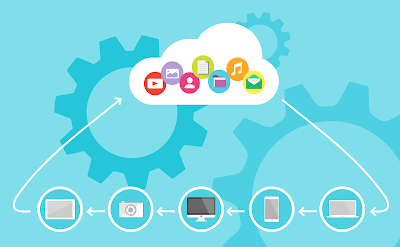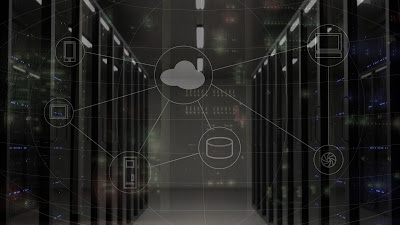Cloud computing has been around since the 1950s, but it's recently become one of the most talked-about technological innovations on the market, and for good reason. Here in this blog post we will see what cloud computing is , major types of cloud computing, and at last we will discuss some examples of cloud computing. If you haven't tried cloud computing yet, you're probably using it without even realizing it! Learn more about 10 of the many ways you're using cloud computing by checking out this list of examples of cloud computing below!
Table Of Contents
What is Cloud Computing?
Cloud computing refers to delivering computing services-including servers, storage, databases, networking, software, analytics, and intelligence-over the Internet (the cloud) to enable faster innovation, more flexible resources, and cost savings.
If you want to know more about cloud computing then you can check out our this article where you can find the disadvantages of cloud computing along with the definition of cloud computing.
Here in this article we will see the major types of cloud computing as well as 10 examples of cloud computing that we are using without knowing.
Let's have a look on the types/services of cloud computing:
Types/Services of Cloud Computing
Cloud computing is a way of delivering computing resources (servers, storage, etc.) as a service over the internet. The cloud provides access to these resources through an application programming interface (API) which enables you to program them using any language or framework. Now we will see the major types or services of cloud computing.
Software as a Service (SaaS)
The Software as a Service distribution model consists of purchasing access to software, as opposed to owning it. This model is popular for many types of enterprise software and services because it helps control software costs and reduces capital outlays.
In SaaS, companies use the flexibility of cloud computing while retaining ownership of their intellectual property. SaaS offers on-premises software's benefits with its flexibility. In addition, if they are using SaaS solutions like Google Apps or Microsoft Office 365, they don't have to worry about space or hardware costs.
Platform as a Service (PaaS)
PaaS is a type of cloud computing that provides a platform for users to develop, test and run their applications. It’s an alternative to the traditional software development lifecycle (SDLC) where you can develop code once and deploy it anywhere in the world.
PaaS allows a more convenient way to build and deploy apps, cutting the hassle of hardware and software investments. Platform as a service (PaaS) is a type of cloud computing service that provides a computing platform and app stack.
Infrastructure as a service (IaaS)
Infrastructure as a service (IaaS) is a cloud computing model in which the provider delivers virtual machines and other infrastructure resources on demand. In IaaS, the provider manages all aspects of the infrastructure, including operating systems, storage, networking and security.
The following are just some examples of what you can expect from an IaaS provider:
- Virtual machine provisioning – This means that your company can start using cloud computing immediately upon signing up with them. You don’t have to worry about buying new hardware or setting up new software before putting it into production—just sign up!
- Automated deployment – With automated deployment tools like Ansible or Chef Job Builder available at many leading providers today these days you can create scripts which run automatically on each new server when it comes online allowing organizations greater flexibility over how they use their resources while reducing overall costs associated with managing physical infrastructure.
Now it's time to see the cloud computing examples. Theses are given below.
Examples of Cloud Computing
1) Dropbox
Dropbox is a popular cloud computing service. Dropbox lets users upload and share files online. Millions of people use it to share files for business and personal purposes. You can store and share files easily with Dropbox, making it a great choice for individuals and businesses alike. Dropbox is just one example of how cloud computing services are being used every day. When you need to access those files again, you can log into your Dropbox account and download them back to your computer. With more than 100 million users around the world, Dropbox is one of the most popular cloud services. You can store anything - photos, documents, videos - in the cloud and sync them across all your devices.
2) Facebook
The word 'Facebook' comes to most people's minds when the term 'cloud computing' is used. It's a site that most users navigate on a day-to-day basis, which also operates as a social media service that many people are connected to. You can create Facebook pages to promote your business, and people can access it from their computer or from their phones. In order to stay in the loop about what their friends are doing, the user does not need to have their laptop with them, as their data is hosted by the company and available from any internet-connected device. For example, if you log out of one device and have an account for the same service logged in on another device, you will no longer have access to your data.
3) Gmail
Google Mail is a good example of cloud computing since it's a web-based email service that stores all your messages on Google's servers. This means you can use the account on any internet-connected computer or phone. Additionally, Gmail is always backed up, so you never have to worry about losing data. It also offers free 5GB of storage space, which is great! It's true that some people may be reluctant to trust their personal information with Google. If you're one of these people, there are other services that are more privacy-friendly and charge for their services - like Microsoft's Office 365.
4) Snapchat
Snapchat is a cloud-based app that allows users to send photos and videos that disappear after a set amount of time. The app also offers filters, lenses, and other features that can be used to edit photos and videos. Snapchat is one of the most popular cloud-based apps with over 150 million daily active users. It’s not limited to just sending disappearing photos and videos; it also has photo editing tools that make it easy for anyone to turn their photo into something professional looking. What's really great about Snapchat is its ability to use augmented reality - or AR - which makes it possible for people in any location or distance from each other to see what someone else sees as if they were standing next to them.
5) Google Maps
Google Maps is a great example of cloud computing. All the data is stored on servers, which means it can be accessed from anywhere with an internet connection. Plus, the data is constantly being updated, so you always have the most accurate information. The best part? Google Maps works offline too! If you're traveling to a place where there's no signal, maps will still work and provide turn-by-turn directions as long as they've been downloaded beforehand.
6) Online Banking
Online banking is a great example of cloud computing. Your bank stores all of your account information on their servers, which you can access from anywhere with an internet connection. This means you can check your balance, transfer money, and pay bills online without having to visit a physical bank branch. It also makes banking more convenient because if the power goes out at home, you still have access to your account. Plus, in the event of a cyber attack like the one that happened in 2017 when RBS was hacked, the banks don't have your sensitive information stored locally so they don't have to worry about paying off cyber criminals or risking more data breaches.
7) Airbnb
Airbnb is a cloud-based platform that allows people to find rooms to rent and list their own properties. The company has been profitable since 2016 and is now valued at $31 billion. Airbnb is a great example of how cloud computing can be used to create a new business model and disrupt an existing industry. Airbnb lets users manage their rentals online, eliminating the need for a middleman like HomeAway or VRBO. AirBnB also saves money by outsourcing customer service, housekeeping, maintenance, and more to third parties who charge less than hotels do for those services. As the company grew larger and became profitable, it was able to invest in some of these areas without turning a profit. Now with a $31 billion valuation, it’s clear that investing in these departments helped increase profitability.
Users are also constantly using cloud computing examples when they share photos on Instagram, videos on YouTube, and files on Dropbox.
8) Netflix
What are some more examples of cloud computing? Netflix: Cloud computing makes it possible for all customers worldwide to access the same content simultaneously. As a result, new episodes of our original series like House of Cards and Orange is the New Black are available in all territories at once. This way, no matter where you live, you can enjoy high-quality shows as soon as they come out—without needing to wait for an expensive DVD or download release. In fact, about 80% of viewing happens outside the United States. This model has created a global audience for many TV shows and movies, including many award-winning programs that would not have been possible without this technology.
For example, YouTube is a video streaming site founded by three former PayPal employees in 2005, Chad Hurley, Steve Chen, and Jawed Karim. YouTube headquarters are in San Bruno, California, but their servers are also spread out over 12 other countries in order to provide a good experience for each user.
9) ATMs
When you withdraw money from an ATM, the machine is actually accessing your bank account information from a remote server. That server is what's known as a cloud. It’s accessible to anyone with an internet connection, and is run by a company that specializes in storing data. Most likely it’s owned by one of these top five IT companies: Companies such as IBM, Microsoft, Amazon Web Services (AWS), Google, or Oracle. With so many potential sources for our banking information, security has become increasingly important. To prevent hacking, most banks store their records on computers they control rather than outsourcing them to third-party servers like ATMs do.
10) Waze
Waze is a traffic and navigation app that relies on real-time traffic info from users. As a result, Waze is consistently getting more precise. Because it's in the cloud, you can access it virtually anywhere. In fact, I haven't been in a place where I couldn't use Waze. Whenever I travel abroad, I can use the app as long as my phone has a data connection or WiFi.
The best part is, even if a user doesn't want to give away their location or updates it only occasionally, Waze will still work because it relies on other drivers reporting about their surroundings.
Conclusion
You might not realize it, but you're probably using cloud computing every day. From online banking to social media to streaming video, the cloud has become an integral part of our lives. And it's only going to become more prevalent in the years to come. Thanks for reading!




0 Comments